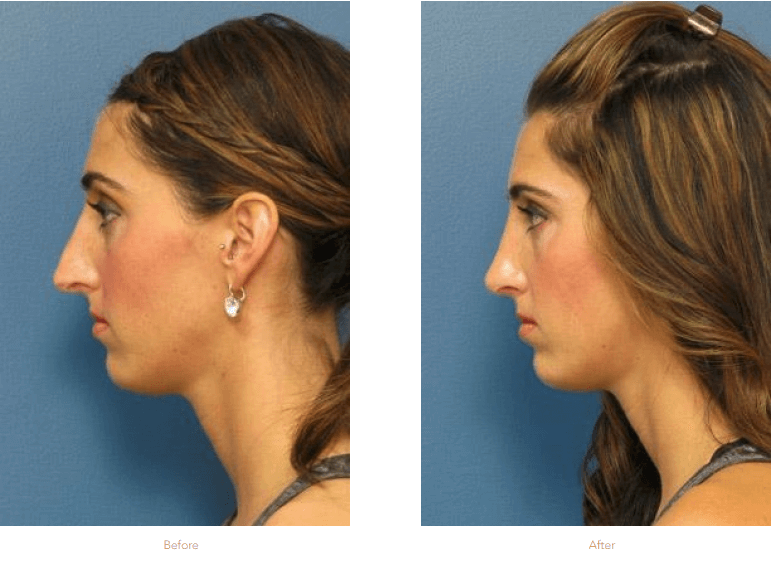Unknown Facts About Austin Rhinoplasty
Table of ContentsWhat Does Austin Rhinoplasty Do?Rhinoplasty Austin Can Be Fun For EveryoneEverything about Austin RhinoplastyWhat Does Rhinoplasty Austin Mean?
Ultrasonic nose surgery utilizes piezoelectric instruments (scrapers rasps, saws) that impact only the bones and the stiff cartilages through ultrasonic vibrations, as the instruments used in oral surgery. The use of piezoelectric instruments needs a more extended technique than the isial one, allowing to picture the entire bony vault, to reshape it with rhinosculpture or to set in motion and stabilize bones after controlled osteotomies.Typically, the cosmetic surgeon initially separates the nasal skin and the soft tissues from the osseo-cartilagenous nasal structure, and after that improves them, sutures the cuts, and uses either an external or an internal stent, and tape, to immobilize the freshly reconstructed nose, and so help with the healing of the surgical cuts.

To record the "before-and-after" physiognomies of the nose and the face of the client, the particular visual perspectives needed are photographs of the nose viewed from the anteroposterior (front-to-back) viewpoint; the lateral view (profiles), the worm's- eye view (from listed below), the bird's- eye view (overhead), and three-quarter-profile views. Photo A. Open nose surgery: At rhinoplasty's end, after the plastic surgeon has actually sutured (closed) the cuts, the fixed (brand-new) nose will be dressed, taped, and splinted immobile to allow the undisturbed recovery of the surgical incisions.
Picture B. Open rhinoplasty: The brand-new nose is prepared with paper tape in order to receive the metal nasal-splint that will immobilize it to keep its proper shape as a brand-new nose. Picture A. Open nose surgery: Pre-operative, the guidelines (purple) made sure the cosmetic surgeon's accurate incisions in cutting the nasal problem correction strategy.
The 7-Minute Rule for Rhinoplasty Austin

Open rhinoplasty: After the initial taping of the nose, a tailor-made, metal nasal-splint, created, cut, and formed by the cosmetic surgeon, is emplaced to debilitate and safeguard go now the tender tissues of the brand-new nose throughout convalescence. Photo D. Open nose surgery: The taping, emplacement of the metal splint, and dressing of the new nose complete the nose job treatment - austin rhinoplasty.
Picture 2. Open nose surgery: The right lower lateral cartilage (blue) is exposed for correction. Picture 1. Open nose surgery: The columellar incision marked as a red-dot standard, will help the surgeon in the precise suturing of the nose. Photo 4. Rhinoplastic correction: A nasal-hump excision strategy; the black line defines the dorsal aircraft of the brand-new nose.
Open nose job: the nasal idea is sutured to narrow the nose. Photo 1. Open nose job: The cuts are endonasal (in the nose), and thus are hidden. The skin-incision to the columella aids the plastic cosmetic surgeon in specifically suturing to hide the scarother than for the columellar cut (red-dot guideline) throughout the nasal base.
Picture 2. Open nose job: The nasal interior. The scissors show the lower lateral cartilage (blue), which is one of the wing-shaped cartilages that adhere the pointer of the nose. The rugged red delineation shows the locale of the columellar cut. Once the skin has actually been lifted from the bone-and-cartilage structure, the surgeon carries out the nasal correction jobs.
Not known Facts About Austin Rhinoplasty
Open nose job: To narrow the tip of a too-wide nose, the cosmetic surgeon initially figures out the reason for the excess nasal width. The stitch being emplaced will narrow the pointer of the nose. The red delineation suggests the edge of the nose-tip cartilage, which is narrowed when the cosmetic surgeon tightens up the folded cartilage peak.
Photo 4. Nasal bulge excision: The black delineation suggests the desired nose-reduction result: a straight nose. The nasal bulge is bone (red) above the scalloped grey line, and cartilage (blue) listed below the scalloped grey line. The cosmetic surgeon cuts the cartilage portion of the bulge with a scalpel, and chisels the bone portion with an osteotome (bone chisel).

Although a lot of revision nose job procedures are "open approach", such a correction is more technically complicated, normally since the nasal support structures either were deformed or damaged in the main rhinoplasty; thus the surgeon needs to re-create the nasal support with cartilage grafts harvested either from the ear (auricular cartilage graft) or from the chest (costal cartilage graft).
In reconstructive rhinoplasty, the defects and deformities that the cosmetic surgeon encounters, and need to restore to normal function, kind, and appearance include broken and displaced nasal bones; interfered with and displaced nasal cartilages; a collapsed bridge of the nose; hereditary defect, trauma (blunt, permeating, blast), autoimmune condition, cancer, intranasal drug-abuse damages, and failed primary nose job results.
Not known Facts About Austin Rhinoplasty
When cartilage is interrupted, suturing have a peek at this site for re-suspension (structural assistance), or the use of cartilage grafts to camouflage an anxiety enable the re-establishment of the normal nasal contour of the nose for the client. When the bridge of the nose is collapsed, rib-cartilage, ear-cartilage, or cranial-bone grafts can be utilized to restore its structural integrity, and thus the aesthetic continuity of the nose.